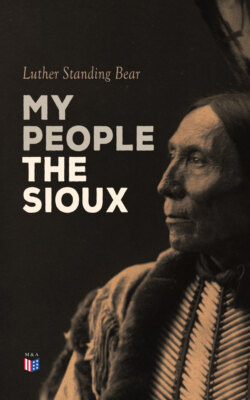Читать книгу My People the Sioux - Luther Standing Bear - Страница 5
На сайте Литреса книга снята с продажи.
INTRODUCTION
ОглавлениеTable of Contents
A painter must know how to mix his paints and he must know how to paint, but whether he reproduces nature or makes a daub depends on his knowledge of the subject he is painting. To write of the West one must know the West.
Being master of all the technique in the world doesn’t give a man knowledge of what he is writing—which accounts for much of the blundering, haphazard vaporings that are written of the West. Libelous stuff, material founded on hearsay, or gathered through a smattering of ill-digested reading, which, in turn, is the output of those so full of their own confidence, they must have been bored in the writing.
Here is a story written by a blanket Indian, the first son of a fighting Sioux. Aside from its beauty and naïveté, the book is invaluable. It is history.
The West was so big: even great men that wrote and painted what they loved could not grasp it all.
Theodore Roosevelt, Frederic Remington, Owen Wister, put the old frontier on the map. These men had every attribute to illustrate the West. They were shy on only one thing—KNOWLEDGE GAINED BY ACTUAL EXPERIENCE. What a pity that such men had not lived the life of the West as Chief Standing Bear did or as Charlie Russell did! Russell’s work will go down to our children’s children’s children—for truth looks out of the canvas.
Owen Wister—great scholar, typical American gentleman—could write stories of the West that made the blood leap in the telling. How unfortunate that he had not spent more years on the frontier! Had he done so, he would never have made ‘The Virginian’ (in his classic of that name), out of simple duty, lead a posse to run down and hang his ‘pardner’ who was wanted for cattle-stealing. Had the Virginian been a real Westerner, had he consented to lead that posse, he would have led them in the opposite direction. And the posse would have loved him for it. The morals of the people of the West seemed to be governed by the altitude, and it is mighty high ground from the old Missouri to where the mountains go down to the sea.
The author of this book may be a bit short on education. I can’t say how short because I do not know enough to judge, but he has a story to tell—one that he learned IN LIFE. The tipis of his people were the first skyscrapers. Trapping and hunting was their calling, but philosophy was their life.
It is a tale told of a people whipped by a stronger race—like dumb animals—for deeds beyond their understanding. I am sure that all men will enjoy and applaud their play and that no man will laugh at their suffering.
General Benteen, of the United States Army, said of the Sioux Indians, ‘They are the greatest warriors that the sun ever shone on.’ We should be proud of these Sioux Indians, for they are Americans, and they come from a country and belong to a day when tongues were seldom hung in the middle, where folks didn’t carry silver in their pockets until it turned black, where, if a gambler took your last dollar, he’d spend it on you, and where lots of small children were not so sure but that some angels wore whiskers and cussed a little bit.
William S. Hart
(Ta-Sunke-Witko)
